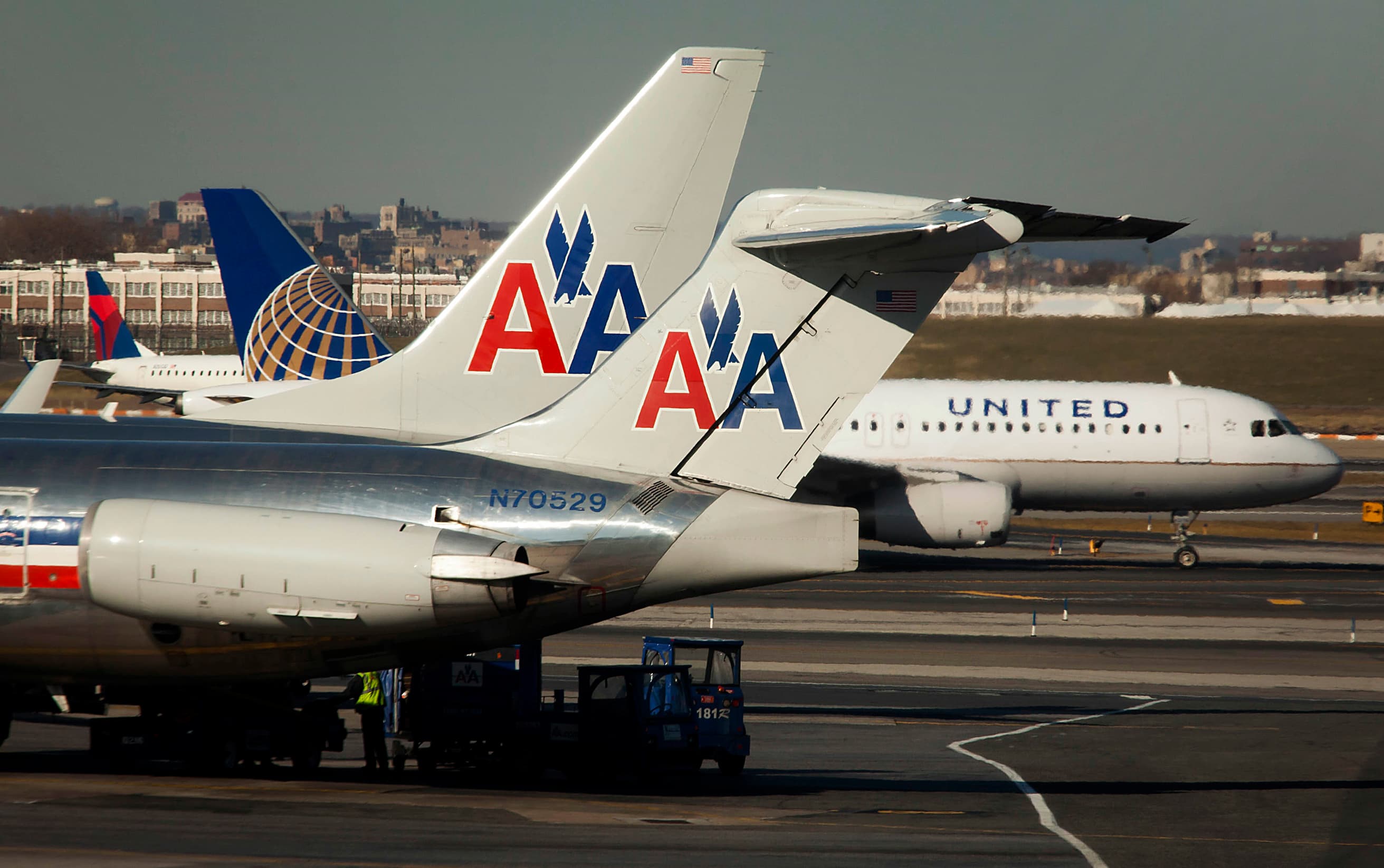U.S. airlines and the Department of Transportation may soon have to consider consolidating service to dozens of cities around the country in a bid to help carriers cut losses, several airline industry executives told CNBC.
Executives with U.S. airlines are expected to meet with leaders of the Transportation Department this week to discuss the state of the industry following approval of a $50 billion bailout package. The aid package requires airlines to not furlough employees for the next six months, while also maintaining service, to the best of their ability, to the cities the airlines currently serve. The problem with maintaining service is that many planes are virtually empty.
“Does it make sense for more than one of us to be flying to a city when there are only a few seats filled on each plane”? one airline executive asked rhetorically in a conversation discussing the situation with CNBC. “It may make more sense to maintain service to that city, but put all passengers on one plane.”
Executives with multiple airlines, who talked on background with CNBC, stress the idea has not yet been formally broached with the Transportation Department. CNBC has reached out to the agency for a comment on the possibility of flight consolidation.
How would service consolidation work? Take the route from New York City to St. Louis, Missouri. Right now, American, Delta and Southwest all fly the route from LaGuardia Airport to St. Louis Lambert International Airport. If the route were temporarily consolidated, all airlines would continue selling tickets on the route, but the carriers would agree to put all the passengers on one plane.
Industry executives say the move would not only require approval from the Trump administration, but also for carriers to negotiate to complex issues including scheduling and sharing costs.
Consolidating service to some cities under one airline idea makes sense given the dramatic and rapid drop in passenger levels, with airlines filling just 5% to 15% of the seats on their flights. On Saturday, the Transportation Security Administration screened just 184,026 passengers at U.S. airports compared to 2.17 mIllion passengers on the same day last year, a decline of more than 91%.
“I can assure you, we’re losing money on every single flight — and big money — so that can’t be sustained indefinitely,” Southwest Airlines CEO Gary Kelly said during a video message distributed to employees on Friday morning.
Kelly, along with the CEOs of American Airlines, United Airlines, Delta and Frontier Airlines, had updated their employees on the state of their industry as Congress prepared to pass a $50 billion aid package for carriers. All emphasized they will not be laying off workers, while trying to maintain as much service as possible.
“We need to continue flying, as requested, and serving those that need to travel,” American Airlines CEO Doug Parker said late last week in a video message to employees. “These are still extraordinarily difficult times and we need to do everything we can support each other and ensure we do not waste one dollar of this government support.”
If the Transportation Deparment agrees to temporarily consolidate service to dozens of cities under one airline, it would allow airlines to further cut costs without totally shutting the industry.
Executives at multiple airlines told CNBC there has never been serious consideration of asking the agency to completely suspend domestic air travel.
Still, the increasing number of travel advisories from state and federal officials has created a situation where airlines are flying many routes with almost no one on board. As a result, U.S. carriers are cutting their April schedules between 25% and 90%.
Frontier Airlines, a low cost-carrier based in Denver, is going the furthest, maintaining just 10% of its schedule in April. The pullback is not only because of slow demand, but also because Frontier said a reduced schedule is the only way to maintain safe operations.
“We believe it is in the interest of everyone’s safety that we reduce flying to a level which lessens the strains now being place on ATC’s (air traffic controllers) TSA and our many other partners,” CEO Barry Biffle wrote in an employee letter sent out Saturday.
Even as U.S. airlines cut schedules, the companies are maintaining a belief that eventually business will rebound.
Nobody is ready to call a bottom on demand, but as Delta CEO Ed Bastian told employees Sunday, the airline is optimistic over the long term. “We are committed to bringing them [flights] back as quickly as possible when the crisis passes.”
